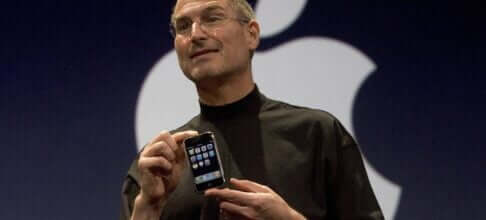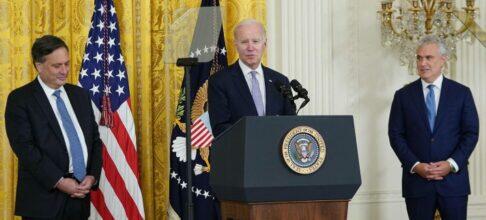
Opinion
Oct 03, 20235 mins
HiringIT LeadershipIT Skills
Forget the conventional wisdom about firing irreplaceable employees. Because if your employees aren’t irreplaceable, you’re doing something wrong.
“The graveyards,” General De Gaulle once ironically observed, “are full of indispensable men.” Maybe so, but the same may not be so easily said about organizations whose success did depend on irreplaceable managers and staff.
Take, for example, Apple. Under Steve Jobs it created the iPod, iPhone, App Store, and iPad — products and services that ranged from radical departures to entirely new concepts.
Under Tim Cook? What his Apple has introduced to the marketplace are copycat items: A streaming service, new smartphone models, hybrid tablet/laptop — fine products, I’m sure, but not particularly innovative.
SUBSCRIBE TO OUR NEWSLETTER
From our editors straight to your inbox
Get started by entering your email address below.
Please enter a valid email address
And so far as its financial performance is concerned, Apple’s Return on Invested Capital has diminished dramatically under Cook, from an astronomical 443% under Steve Jobs to a “mere” — which is to say superior — 183%.
So, from the perspective of Apple’s board of directors, Jobs was irreplaceable. From the perspective of the digital marketplace, on the other hand, he was, well, irreplaceable.
The great and the irreplaceable
Of course, as most Jobs-related anecdotes go, this is statistics with a sample size of one. Instead, let’s look at the organization you lead. Depending on the business expert I’m listening to and the day of the week, I’m told three truths:
- Good employees who work together as a team outperform great employees who don’t.
- Good employees with great processes outperform great employees with bad processes.
- If an employee is irreplaceable, you should immediately fire that employee.
My own firsthand experience is quite different. It tells me that:
- Great employees can and do overcome bad processes.
- Great employees can and do overcome lousy managers.
- Great employees can and do pull along mediocre teams.
- Making one or two great hires is the most critical step in turning around an underperforming organization.
- And, if Frederick Brooks’ The Mythical Man Month is to be believed (it is), the best IT employees are at least 10 times more effective than average ones, even though their paychecks are nowhere near 10 times what average employees receive. So you can easily afford to hire great employees.
But isn’t there a difference between great employees and irreplaceable ones?
The algebra of irreplaceability
Brooks explained the math: The number of personal relationships in a team of size n is n(n-1)/2so a team with 10 members contains 45 personal relationships between pairs of employees. Or, each team member has a relationship with every member (n) excluding themselves (-1).
So, doing a bit of algebra, when you replace one employee in a 10-member team with someone new, you’ve replaced not 10%, but 20% of the team when you measure team size as the number of relationships in it.
Especially if the employee you’ve lost is a great employee, you’re looking at, not a changed team, but an entirely different one. If their replacement is only average, the new team is still far less effective.
The conclusion is as obvious as it is rarely practiced: Treat your best employees as if you’re trying to recruit them, every day of every week.
Treat them that way because if they’re that good, other employers are trying to find and recruit them, every day of every week, too.
What makes a great employee
“Great employee” is easy to type. It’s less easy to define. Here’s a short list to get you started. Scrub it by discussing the question with your leadership team.
The habit of success: Some employees seemingly don’t know how to fail. Give them an assignment and they’ll figure out a way to get it done.
Competence: As a general rule, it’s better to apologize for an employee’s bad manners than for their inability to do the work. Without competence, employees with a strong success habit can do a lot of damage by, for example, creating kludges instead of sustainable solutions.
Followership: Leadership is a prized attribute for employees to have. Prized, that is, if they’re leading in their leader’s direction. Otherwise, if you and they are leading in different directions, all your prized leaders will do is generate conflict and confusion. Followership is what happens when they embrace the direction you’re setting and make it their own.
Intellectual honesty: Some employees can be persuaded with evidence and logic. Others trust their guts instead. That’s a physiological error. You want people who digest with their intestines but think with their brains.
Team orientation: You want employees who support their team, not those who compete with it.
Not that kind of irreplaceable: Great employees are and should be irreplaceable, or nearly so. But there’s another kind of irreplaceable employee — those who hoard information and techniques so that getting rid of them is impractical. Take all steps necessary to make these irreplaceable employees replaceable. Then, as soon as you can, replace them with the desirable sort of irreplaceable employee.
The ‘Golden Rule of Recruiting’: Don’t settle
Fail to fill an open position and everyone will have to pick up the workload. So it’s tempting to sigh, shrug, and hire someone who seems adequate.
Before you go through with it, ask yourself: Is adequate going to be good enough over the long haul? Or are you better off waiting for an applicant who will, like the employees you already have, be irreplaceable?
SUBSCRIBE TO OUR NEWSLETTER
From our editors straight to your inbox
Get started by entering your email address below.
Please enter a valid email address













